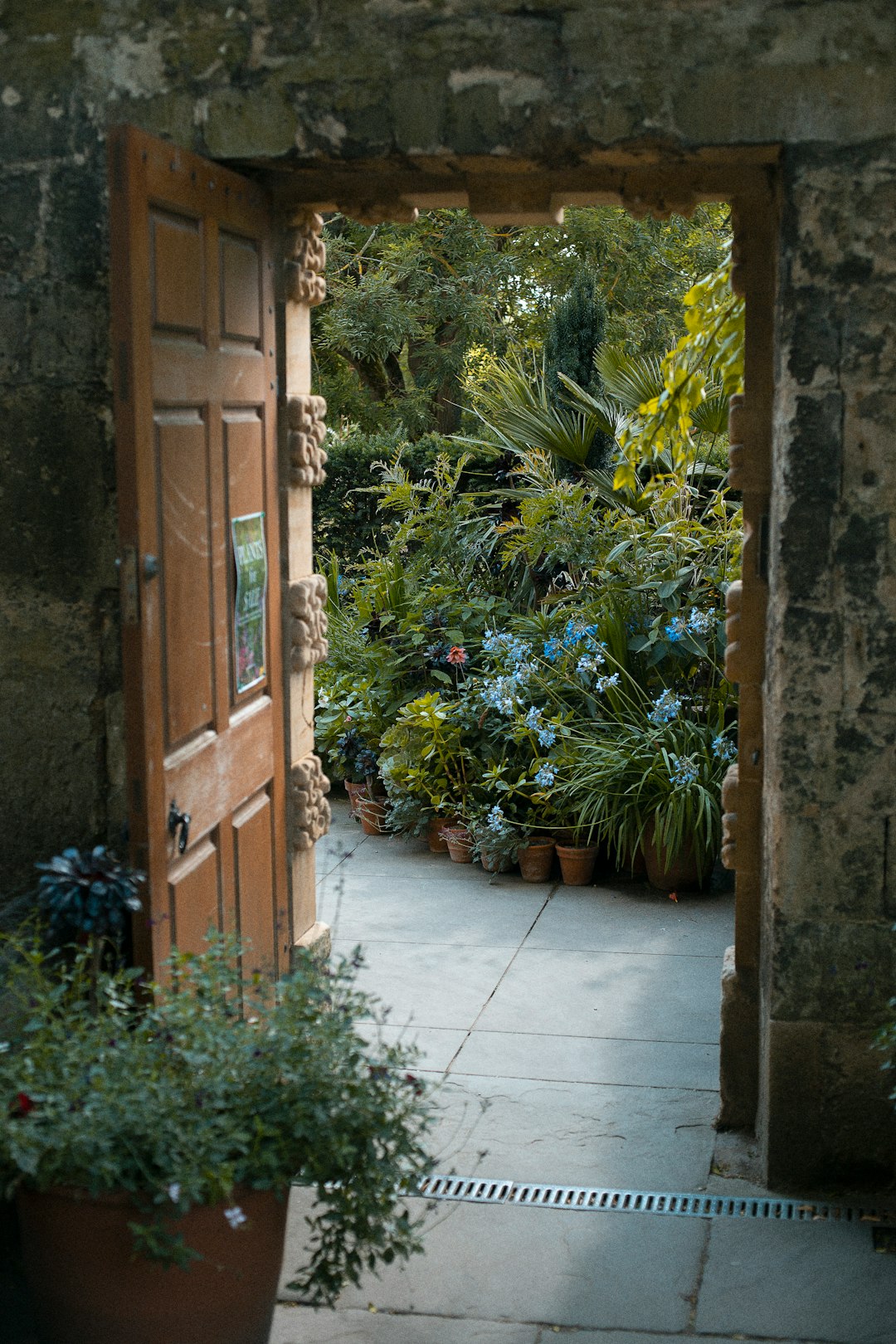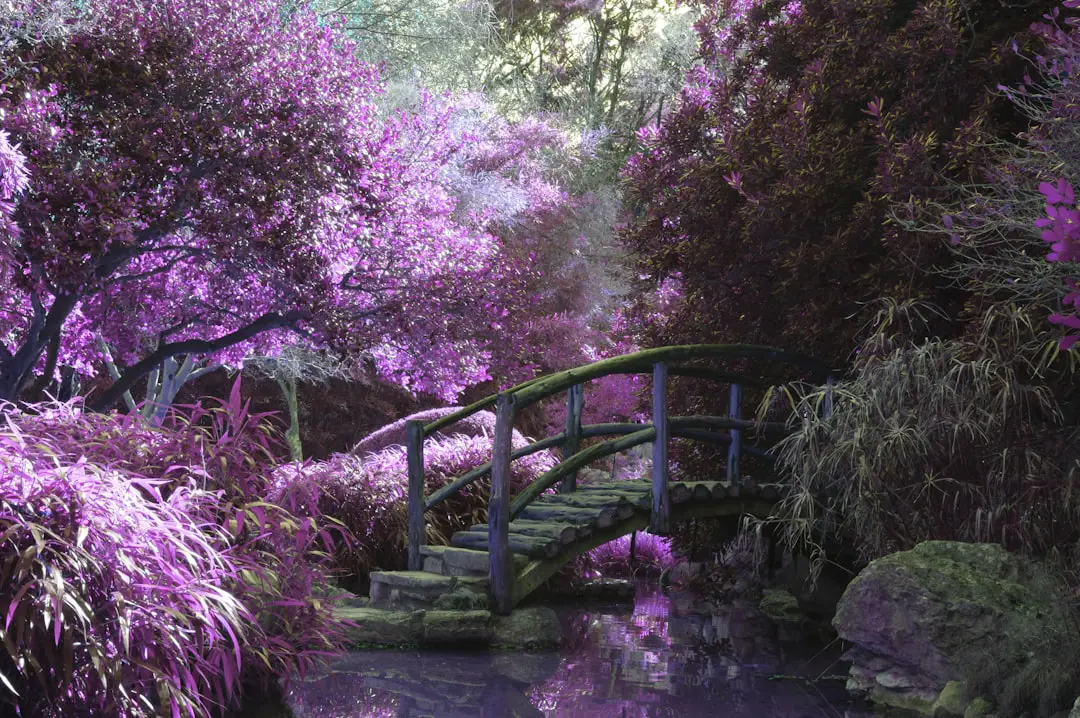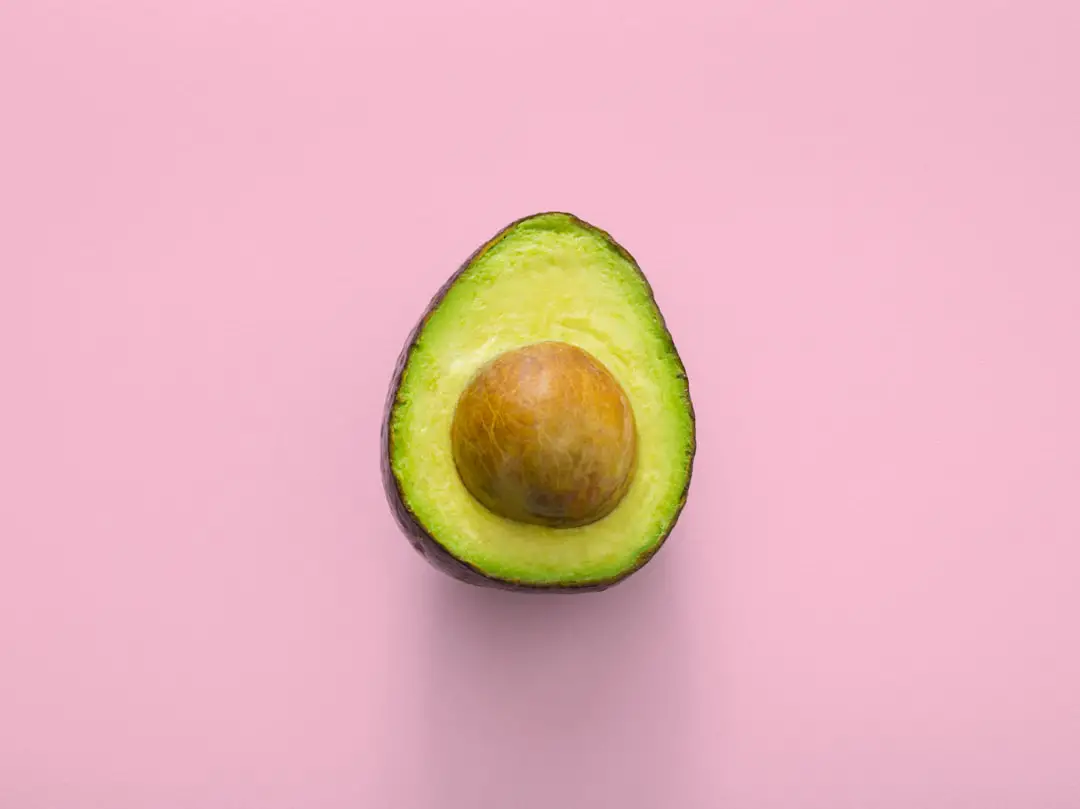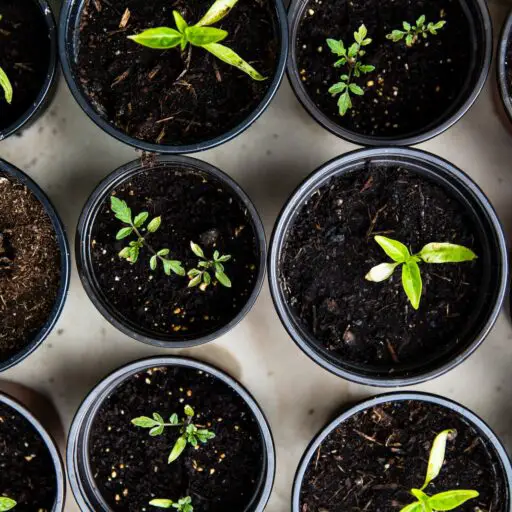Support our educational content for free when you purchase through links on our site. Learn more

Are you tired of staring at a patch of grass that requires endless mowing and maintenance? What if we told you that you could turn that mundane lawn into a vibrant, productive garden bursting with delicious fruits, vegetables, and herbs? Welcome to the world of edible landscaping, where beauty meets bounty! In this article, we’ll explore 10 innovative ideas to help you create an edible paradise right in your backyard. From unique plant combinations to sustainable practices, we’ve got you covered!
Did you know that the average meal travels over 1,200 miles from farm to plate? By embracing edible landscaping, you can shrink that distance to just a few steps from your kitchen door! Imagine the satisfaction of harvesting fresh tomatoes for your salad or plucking ripe strawberries for dessert. Ready to dig in? Let’s get started!
Key Takeaways
- Edible landscaping combines beauty and functionality, allowing you to grow food while enhancing your outdoor space.
- Historical roots show that this practice has been around for centuries, proving its value and sustainability.
- Top 10 edible plants include tomatoes, strawberries, and herbs, perfect for beginners and seasoned gardeners alike.
- Unique design ideas like vertical gardens and edible hedges can transform your yard into a stunning edible oasis.
- Maintenance tips ensure your garden thrives with minimal effort, making it a rewarding experience.
Ready to start your edible journey? 👉 Shop our selection of jujube trees and other edible plants here or explore our garden design ideas for more inspiration! 🌿
Table of Contents
- Quick Tips and Facts
- The Roots of Edible Landscaping: A Historical Perspective
- Why Choose Edible Landscaping? The Benefits You Can’t Ignore
- Getting Started: Designing Your Edible Landscape
- Top 10 Edible Plants for Your Garden
- Unique Edible Landscape Ideas to Inspire You
- Maintenance Tips for a Thriving Edible Garden
- Edible Landscaping: A Sustainable Choice for the Environment
- Featured Collection: Jujubes!
- Join Our Community: Workshops and Events
- About Us: Your Edible Landscaping Experts
- Shop Locally or Order Online for Your Edible Garden Needs
- Stay Connected: Subscribe for Updates and Tips
- Conclusion
- Recommended Links
- FAQ
- Reference Links
Quick Tips and Facts (#quick-tips-and-facts)
Want to transform your yard into a vibrant, delicious oasis? Edible landscaping might be your perfect solution! Here at Community Gardening™, we’re passionate about helping you create a garden that’s as beautiful as it is bountiful. Let’s dive into some quick tips and fun facts to whet your appetite for edible landscaping:
- Did you know? You can grow blueberries in decorative containers! These beauties offer a double whammy – gorgeous flowers in the spring and juicy berries for your morning smoothie. 🫐
- Quick Tip: Intercropping, or planting different species together, can maximize your yield and deter pests. Try planting basil alongside your tomatoes for a pest-free and flavorful harvest! 🍅🌿
- Fun Fact: Ancient civilizations practiced forms of edible landscaping. The Hanging Gardens of Babylon, one of the Seven Wonders of the Ancient World, incorporated edible plants alongside ornamental ones. Talk about a historical precedent! 🏛️
Intrigued? We thought so! Read on to discover the ins and outs of edible landscaping and how you can get started.
The Roots of Edible Landscaping: A Historical Perspective (#the-roots-of-edible-landscaping-a-historical-perspective)
Edible landscaping might seem like a modern trend, but its roots run deep in history. For centuries, communities around the world have integrated edible plants into their landscapes for both sustenance and aesthetic appeal. Let’s take a trip back in time to explore the fascinating evolution of this practice:
From Monasteries to Victory Gardens: A Journey Through Time
- Medieval Times: Monasteries played a crucial role in preserving knowledge, including the art of cultivating food. Their gardens often featured a harmonious blend of medicinal herbs, fruit trees, and vegetables, showcasing the practicality and beauty of edible plants.
- Renaissance Gardens: The Renaissance era witnessed a surge in interest in classical art and design, influencing garden layouts. Formal gardens incorporated geometric patterns and symmetrical designs, often featuring edible plants like espaliered fruit trees and neatly trimmed hedges of herbs.
- Victory Gardens: During World War I and II, victory gardens sprouted up in homes and communities across the globe. These gardens provided a vital source of fresh produce during times of scarcity, demonstrating the resilience and resourcefulness of edible landscaping.
The Modern Resurgence: A Growing Movement
Today, edible landscaping is experiencing a revival, driven by a desire for:
- Sustainable Living: Growing your own food reduces your carbon footprint and promotes self-sufficiency. Learn more about the benefits of community gardens here.
- Healthier Lifestyles: Fresh, homegrown produce is packed with flavor and nutrients, encouraging healthier eating habits.
- Connection with Nature: Tending to an edible garden fosters a deeper connection with the natural world and the origins of our food.
From ancient practices to modern movements, edible landscaping has stood the test of time. It’s a testament to the enduring relationship between humans and plants, reminding us of the beauty and bounty that nature provides.
Why Choose Edible Landscaping? The Benefits You Can’t Ignore (#why-choose-edible-landscaping-the-benefits-you-cant-ignore)
Beyond its aesthetic appeal, edible landscaping offers a plethora of benefits that extend far beyond the dinner plate. Let’s explore the compelling reasons why you should consider transforming your yard into an edible paradise:
1. A Feast for the Senses (and Your Stomach!)
Imagine stepping into your backyard and being greeted by the sweet aroma of strawberries ripening in the sun or the vibrant hues of Swiss chard adding a splash of color to your landscape. Edible landscaping transforms your outdoor space into a sensory delight, engaging your sight, smell, and taste buds. 🍓🥬
2. From Garden to Table: Freshness You Can Taste
Nothing beats the taste of freshly harvested fruits and vegetables. With edible landscaping, you’ll have access to the freshest, most flavorful produce right at your doorstep. Say goodbye to grocery store lines and hello to garden-fresh meals! 🥗
3. Pocket-Friendly and Planet-Conscious
Growing your own food can help you save money on groceries and reduce your environmental impact. By choosing locally grown, organic produce from your backyard, you’re minimizing transportation emissions and supporting a more sustainable lifestyle. 🌎
4. A Haven for Biodiversity
Edible gardens attract beneficial insects, birds, and pollinators, creating a thriving ecosystem in your backyard. By fostering biodiversity, you’re contributing to a healthier environment for all. 🐝🦋
5. A Source of Joy and Connection
Gardening is a rewarding and therapeutic activity that can reduce stress, improve mental well-being, and foster a deeper connection with nature. Sharing the fruits (and vegetables!) of your labor with friends and family strengthens bonds and creates lasting memories. Join us for community garden events to connect with other gardening enthusiasts!
Getting Started: Designing Your Edible Landscape (#getting-started-designing-your-edible-landscape)
Ready to embark on your edible landscaping journey? Here’s a step-by-step guide to help you design a garden that’s both functional and visually appealing:
1. Assess Your Space and Sunlight
Before you grab your shovel, take some time to observe your yard. How much sunlight does it receive? What’s the soil type? Understanding your space’s unique characteristics will help you choose the right plants for optimal growth. ☀️
2. Create a Plan: Blending Beauty and Bounty
Think about the fruits, vegetables, and herbs you enjoy eating and research their growing requirements. Sketch out a rough plan, incorporating elements like raised beds, pathways, and seating areas. Don’t be afraid to get creative and experiment with different layouts. ✏️
3. Choose Your Edible Stars
Select plants that thrive in your climate and soil type. Consider factors like mature size, growth habit, and maintenance requirements. For inspiration, check out our garden design ideas. 🌱
4. Think Beyond the Vegetable Patch
Edible landscaping is about seamlessly integrating edible plants into your existing landscape. Consider using fruit trees as focal points, training vines along fences or trellises, and tucking herbs into flower beds. 🌳
5. Start Small and Expand Gradually
Don’t feel overwhelmed by the prospect of a complete garden overhaul. Start with a small area or a few container plants and gradually expand your edible landscape as you gain experience and confidence. 🌱
Top 10 Edible Plants for Your Garden (#top-10-edible-plants-for-your-garden)
With so many delicious options to choose from, selecting the right plants for your edible landscape can be an exciting yet daunting task. To help you get started, we’ve compiled a list of 10 versatile and rewarding edible plants that are perfect for beginners and seasoned gardeners alike:
- Tomatoes: A staple in many gardens, tomatoes come in a wide variety of shapes, sizes, and flavors. They thrive in full sun and well-drained soil. 🍅
- Lettuce: Easy to grow and quick to mature, lettuce is a great choice for beginner gardeners. Plant several varieties for a colorful and flavorful salad mix. 🥬
- Strawberries: These sweet treats are a delight to grow and harvest. Plant them in raised beds or hanging baskets for easy access. 🍓
- Blueberries: These antioxidant-rich berries prefer acidic soil and can thrive in containers or as landscape shrubs. 🫐
- Herbs: Basil, rosemary, thyme, and oregano are just a few of the many herbs that add flavor to your dishes and fragrance to your garden. 🌿
- Zucchini: This prolific producer is a great source of vitamins and can be used in countless recipes. 🥒
- Bell Peppers: These colorful vegetables add sweetness and crunch to your meals. Plant them in a sunny spot with well-drained soil. 🫑
- Cucumbers: These refreshing vegetables thrive in warm weather and need plenty of space to climb. 🥒
- Carrots: These root vegetables prefer loose, sandy soil and can be sown directly into the ground. 🥕
- Radishes: Quick to mature and easy to grow, radishes are a great addition to salads and sandwiches.
Remember to choose plants that are suitable for your climate and growing conditions. With a little planning and care, you’ll be enjoying the fruits (and vegetables!) of your labor in no time!
Unique Edible Landscape Ideas to Inspire You (#unique-edible-landscape-ideas-to-inspire-you)
Edible landscaping is all about pushing boundaries and thinking outside the traditional vegetable patch. Here are some unique and inspiring ideas to transform your yard into a captivating and delicious edible oasis:
- Vertical Gardens: Maximize space and create a stunning visual display with vertical gardens. Train vining vegetables like cucumbers and beans on trellises, or grow herbs and strawberries in hanging baskets.
- Edible Hedges: Ditch the boring shrubs and create a living fence with edible plants like blueberry bushes, rosemary, or lavender.
- Fruit Tree Espalier: Train fruit trees to grow flat against walls or fences, creating a beautiful and space-saving focal point in your garden.
- Edible Water Features: Integrate edible plants into your water features. Watercress and water spinach thrive in aquatic environments, adding a unique touch to your landscape.
- Spiral Herb Garden: Create a visually appealing and functional herb garden with a spiral design. This allows for easy access to all your herbs and maximizes growing space.
Maintenance Tips for a Thriving Edible Garden (#maintenance-tips-for-a-thriving-edible-garden)
Maintaining an edible landscape doesn’t have to be a chore. With a few simple tips and tricks, you can keep your garden healthy, productive, and looking its best:
- Watering Wisely: Water deeply and less frequently to encourage strong root growth. Consider using a soaker hose or drip irrigation system to conserve water.
- Feeding Your Plants: Amend your soil with compost or organic fertilizer to provide essential nutrients.
- Mulching Matters: Apply a layer of mulch around your plants to suppress weeds, retain moisture, and regulate soil temperature.
- Pest and Disease Control: Monitor your plants regularly for signs of pests or diseases. Use organic pest control methods whenever possible.
- Pruning for Success: Prune your plants regularly to remove dead or diseased branches, improve air circulation, and encourage bushier growth. Learn more about our garden maintenance tips.
Edible Landscaping: A Sustainable Choice for the Environment (#edible-landscaping-a-sustainable-choice-for-the-environment)
In a world grappling with climate change and environmental degradation, embracing sustainable practices is more important than ever. Edible landscaping offers a tangible way to reduce your ecological footprint and contribute to a healthier planet. Here’s how:
1. Shrinking Your Food Miles
The average meal travels over 1,200 miles from farm to plate, consuming fossil fuels and releasing greenhouse gases along the way. By growing your own food, you’re significantly reducing your food miles and their associated environmental impact.
2. Conserving Water
Traditional lawns are notoriously thirsty, requiring vast amounts of water to stay green. Edible landscapes, especially those incorporating drought-tolerant plants and water-wise irrigation techniques, can significantly reduce water consumption.
3. Reducing Chemical Use
Conventional agriculture relies heavily on synthetic pesticides, herbicides, and fertilizers, which can pollute waterways and harm beneficial insects. Edible landscaping encourages organic gardening practices, minimizing chemical use and promoting a healthier ecosystem.
4. Combating Food Waste
By growing your own food, you’re more likely to appreciate and consume what you harvest, reducing food waste. Excess produce can be shared with neighbors, donated to local food banks, or preserved for later use.
5. Promoting Biodiversity
Edible landscapes, with their diverse plantings and natural pest control methods, create habitats for beneficial insects, birds, and other wildlife. This biodiversity is essential for a healthy and resilient ecosystem.
Featured Collection: Jujubes! (#featured-collection-jujubes)
Looking for a unique and delicious addition to your edible landscape? Look no further than the jujube (Ziziphus jujuba), a fruit native to China that’s been cultivated for over 4,000 years! Here at Community Gardening™, we’re excited to introduce our featured collection of jujube varieties, each with its own distinct flavor profile and growth habit:
Honey Jar Jujube (#honey-jar-jujube)
- Description: The Honey Jar Jujube lives up to its name with its small, exceptionally sweet, and slightly spicy fruit. This variety is known for its thin skin and juicy flesh, making it a delightful treat to eat fresh or dried.
- Growth Habit: Honey Jar Jujubes are relatively compact trees, making them ideal for smaller gardens or even large containers. They prefer full sun and well-drained soil.
Sugarcane Jujube (#sugarcane-jujube)
- Description: Prepare to be amazed by the Sugarcane Jujube’s incredibly sweet fruit! This variety boasts attractive, shiny leaves and a carefree growth habit, making it a low-maintenance addition to your edible landscape. With its high chill hour requirement (150 hours below 45°F), it’s best suited for regions with cool winters.
- Growth Habit: Sugarcane Jujubes are vigorous growers and can reach heights of up to 20 feet. They prefer full sun and well-drained soil.
G-A 866 Jujube (#g-a-866-jujube)
- Description: If you’re a fan of dates and apples, you’ll love the G-A 866 Jujube! This variety produces shiny, reddish-brown fruit with a sweet, apple-like flavor. Its unique taste and attractive appearance make it a standout in any edible landscape.
- Growth Habit: G-A 866 Jujubes are medium-sized trees that can grow up to 15 feet tall. They prefer full sun and well-drained soil.
Shanxi Li Jujube (#shanxi-li-jujube)
- Description: Prepare for a mouthful of flavor with the Shanxi Li Jujube! This variety is known for its large, elongated fruit that can reach up to 2 inches in length. Its sweet, slightly tart flavor and crisp texture make it a versatile fruit for fresh eating, drying, or juicing.
- Growth Habit: Shanxi Li Jujubes are vigorous growers and can reach heights of up to 25 feet. They prefer full sun and well-drained soil.
Ready to add these unique and delicious jujubes to your edible landscape? Head over to our online store or visit us in person to browse our full selection of jujube trees!
Join Our Community: Workshops and Events (#join-our-community-workshops-and-events)
At Community Gardening™, we believe that gardening is more rewarding when shared with others! That’s why we offer a variety of workshops, events, and resources to connect you with fellow gardening enthusiasts and help you expand your knowledge and skills.
Pruning Workshop: February 15th, 2025
Join us for a hands-on pruning workshop led by our expert team! Learn the proper techniques for pruning fruit trees, shrubs, and vines to promote healthy growth and maximize yield.
Date: Saturday, February 15th, 2025 (backup date: February 22nd)
Time: 10:00 AM – 12:00 PM & 2:00 PM – 4:00 PM
Location: 361 Spirit Ridge Ln, Afton, VA 22920
Cost: $40 per person
Registration: Required, limited spots available
To register or learn more about our upcoming events, visit our website or contact us today!
About Us: Your Edible Landscaping Experts (#about-us-your-edible-landscaping-experts)
At Community Gardening™, we’re passionate about helping you create beautiful, productive, and sustainable edible landscapes. Our team of experienced gardeners is dedicated to providing you with the highest quality plants, tools, and resources to make your gardening journey a success. We believe that everyone should have access to fresh, healthy food, and we’re committed to promoting sustainable gardening practices that benefit both people and the planet. Learn more about community gardening and how you can get involved!
Shop Locally or Order Online for Your Edible Garden Needs (#shop-locally-or-order-online-for-your-edible-garden-needs)
Whether you prefer to browse our wide selection of plants in person or shop from the comfort of your own home, we’ve got you covered! Visit our retail location in Afton, VA, to experience our edible oasis firsthand, or explore our online store to discover a curated collection of plants, tools, and resources delivered straight to your doorstep.
Stay Connected: Subscribe for Updates and Tips (#stay-connected-subscribe-for-updates-and-tips)
Don’t miss out on our latest gardening tips, exclusive offers, and upcoming events! Subscribe to our newsletter and join our vibrant community of edible landscaping enthusiasts.
Conclusion

Edible landscaping is not just a trend; it’s a lifestyle choice that can transform your outdoor space into a vibrant, productive haven. By integrating edible plants into your landscape, you can enjoy the beauty of nature while reaping the rewards of fresh, homegrown produce. From the historical roots of this practice to the modern benefits it offers, we hope this guide has inspired you to take the plunge into the world of edible gardening.
Key Takeaways:
- Aesthetic Appeal: Edible plants can enhance the beauty of your garden while providing delicious harvests.
- Sustainability: Growing your own food reduces your carbon footprint and promotes environmental health.
- Community Connection: Engaging in edible landscaping fosters a sense of community and encourages healthier eating habits.
So, are you ready to dig in and create your own edible paradise? Remember, the journey of gardening is as rewarding as the harvest itself! 🌱
Recommended Links
-
👉 Shop Edible Landscaping Products:
- Jujube Trees: Amazon | Edible Landscaping Official
- Herb Seeds: Amazon | Burpee Official
- Raised Garden Beds: Amazon | Gardener’s Supply Company
-
Books on Edible Landscaping:
FAQ

What are the benefits of edible landscaping in urban areas?
Urban Edible Landscaping Benefits
Edible landscaping in urban areas offers numerous advantages:
- Food Security: It provides access to fresh produce, reducing reliance on grocery stores.
- Aesthetic Improvement: Transforming concrete jungles into green spaces enhances the visual appeal of neighborhoods.
- Community Engagement: Urban gardens foster community bonds and promote local food initiatives.
- Biodiversity: They create habitats for pollinators and beneficial insects, contributing to urban biodiversity.
Read more about “15 Exciting Community Garden Activities to Grow Together 🌱 …”
How do I design an edible landscape for my backyard?
Steps for Designing Your Edible Landscape
- Assess Your Space: Evaluate sunlight, soil quality, and available space.
- Choose Plants Wisely: Select a mix of fruits, vegetables, and herbs that thrive in your climate.
- Plan Layout: Incorporate pathways, raised beds, and seating areas for functionality and beauty.
- Integrate with Existing Landscape: Blend edible plants with ornamental flowers and shrubs for a cohesive look.
Read more about “How to Monetize Your Garden: 15 Creative Strategies for 2024 🌱💰”
What types of plants are suitable for edible landscaping in different climates?
Climate-Specific Edible Plants
- Temperate Climates: Apples, pears, and strawberries thrive in cooler regions.
- Tropical Climates: Bananas, mangoes, and papayas flourish in warm, humid environments.
- Arid Climates: Cacti, succulents, and drought-tolerant herbs like rosemary and thyme are ideal.
Can I use edible landscaping to grow my own fruits and vegetables year-round?
Year-Round Edible Gardening
Yes! With the right techniques, you can grow fruits and vegetables year-round:
- Greenhouses: Use greenhouses or cold frames to extend the growing season.
- Container Gardening: Grow herbs and vegetables in containers indoors during winter.
- Seasonal Planting: Choose crops that are suitable for each season, such as kale in winter and tomatoes in summer.
How does edible landscaping impact local food systems and community gardening?
Impact on Food Systems
Edible landscaping strengthens local food systems by:
- Encouraging Local Production: It reduces the need for transported produce, supporting local farmers.
- Promoting Food Sovereignty: Communities gain control over their food sources, leading to healthier eating habits.
- Building Resilience: Diverse edible landscapes can withstand economic and environmental challenges.
What are some low-maintenance edible landscaping ideas for beginners?
Low-Maintenance Edible Options
- Perennial Herbs: Plant herbs like chives, mint, and oregano that come back year after year.
- Fruit Trees: Choose dwarf varieties of fruit trees that require less space and care.
- Self-Seeding Plants: Incorporate plants like arugula and cilantro that reseed themselves for easy growth.
How can edible landscaping contribute to a sustainable and environmentally-friendly community garden?
Sustainability Through Edible Landscaping
Edible landscaping promotes sustainability by:
- Reducing Waste: Homegrown produce minimizes food waste and packaging.
- Encouraging Organic Practices: It often relies on organic gardening methods, reducing chemical usage.
- Enhancing Ecosystems: Diverse plantings attract beneficial insects and improve soil health.
Read more about “Discover 15 Sustainable Gardening Practices for a Greener Future 🌱”
Reference Links
- Edible Landscaping
- Joe Gardener Podcast
- Community Gardening Benefits
- Community Gardening Events
- Products — Edible Landscaping
With these insights, you’re well-equipped to embark on your edible landscaping journey. Happy gardening! 🌿

